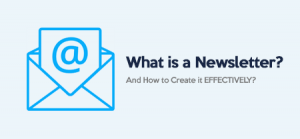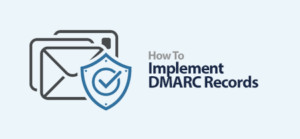Every time a user imports new addresses or sends a campaign to new people, the MailChimp abuse prevention system Omnivore, checks your audience for any email addresses that you have not yet contacted via MailChimp.
When you receive a warning that your audience's expected bounce or abuse level is very high, they will prevent sending to that audience before you delete the wrong addresses.
What is Mailchimp Omnivore?
MailChimp omnivore, in simple words, is nothing but protection against abuse. MailChimp Omnivore is an algorithm that runs through your email list to assess the risk of bounce rates or abuse rates whenever you import your email database into MailChimp's system.
MailChimp omnivore can be understood as a safeguard against potential abuse within your email marketing activities. It functions as an algorithm that evaluates the risk of bounce rates and abuse rates associated with your email list whenever you import it into MailChimp's system. By analyzing the data, omnivore helps protect your campaigns by identifying potential issues or risks that may arise from the imported email database.
In a nutshell: MailChimp Omnivore is an automated abuse-prevention algorithm programmed “to predict a bounce, complaint, or spam trap rate which will exceed industry limits,” per MailChimp statement.
MailChimp Omnivore's exact warning message is: "Your account has one or more issues that need to be resolved. View issues" - "Our automated abuse-prevention system, omnivore, has detected an action or content in your account that may violate our acceptable use policy. Please review our acceptable use policy for more information on these violations.".

Mailchimp Omnivore alert looks like this.
While the Mailchimp Omnivore warning serves its purpose as a precautionary system, alerting you before sending a potentially harmful campaign that could negatively impact your sender reputation and email deliverability, its assistance ends there. Regrettably, Mailchimp does not provide specific information about which email addresses have been flagged or the reasons behind the flagging. This leaves you on your own to diagnose and resolve the issue in order to proceed with sending your campaigns. It becomes your responsibility to investigate and address any potential problems with your email list or campaign content to mitigate the impact of the warning and ensure successful email delivery.
What Triggers Mailchimp Omnivore?
First, you should know that the Mailchimp omnivore warning does not mean your Mailchimp account is suspended or closed. If you remove the flagged list and upload another list with no problem, you can send email campaigns with no problem. So, the Mailchimp omnivore warning belongs to the uploaded list, not your entire account. One key factor triggers MailChimp omnivore and troubles you: "The quality of your email list." Once you import your email database, MailChimp Omnivore predicts the potential bounce rate, abuse rate, spam traps, and hard bounces.
Your email list has been flagged because it most probably contains old outdated or deactivated addresses, bad syntax, job titles rather than names, disposable emails or email addresses or the emails that flagged as spam traps.
Based on this information, ensuring the quality of your email list when using Mailchimp is crucial to avoid triggering the Mailchimp omnivore warning. The omnivore warning primarily analyzes the potential bounce rate, abuse rate, spam traps, and hard bounces associated with the imported email database.
So, if you have received the Mailchimp Omnivore warning, it indicates that your email list likely includes addresses that have the following characteristics:
- Spam traps: These are fake but operational email addresses created by Internet Service Providers (ISPs) and anti-spam organizations to identify and catch spammers. It is crucial to learn more about spam traps and take necessary measures to avoid them.
- Hard bounces: These are email addresses or domains that do not exist or email servers that have blocked incoming messages. Sending emails to such addresses will result in a bounce-back.
- Potential abuse complaints: This occurs when recipients mark your emails as spam or junk. While occasional spam complaints can happen even with genuine subscribers who have willingly opted in to receive your emails, a high rate of spam complaints can indicate that recipients did not provide their consent to receive your emails.
Maintaining a clean and up-to-date list and removing any flagged or problematic entries before uploading a new list is important. Doing so allows you to continue sending email campaigns without any issues, as the warning pertains to the uploaded list rather than your entire Mailchimp account.
The omnivore algorithm is very accurate in measuring the quality of an email list. If the risk associated with an email list is beyond the specified limit, you will not be allowed to send emails to the affected list. Sending campaigns to such email accounts can harm their email deliverability.
Frequent omnivore warnings question your email list collection process and the maintenance of the list; it can also lead to a permanent account ban. Let’s explore how to avoid the MailChimp omnivore issue and successfully send email campaigns.
How to Fix Mailchimp Omnivore Warning?
As said earlier, it is all about the hygiene of your email list. Taking care of it can keep you miles away from omnivore horror. The simplest and most effective way to remove the warning is to use an email validation service to validate your email list.
Here are a few real-life scenarios of omnivore warnings and measures:
Case One - Newly imported subscribers list
If you have never had an issue like Omnivore and you have recently imported a new list of email subscribers. There is a high chance of a problem with your fresh imports. Try to undo the latest import and reconfirm the addresses. You must use email validation services to clean up new emails and try re-uploading them.
Case Two - You have not added new subscribers in the recent past
If you have not added any new contacts and end up with an omnivore warning, try to clean your email list immediately. As email accounts decay over a period, there are chances that some of the emails in your list have become inactive or invalid.
Case Three - Who the hell imported this subscriber?
This can happen if you use a shared account; keeping track of the subscriber's list isn't easy. For such a scenario, you need to segment the list within MailChimp by following these simple steps.

Create a segment by using the below option from your MailChimp dashboard
- Date added
- Is after
- a specific campaign was sent
- and choose the last email campaign from the drop-down menu
Download the segmented list and re-verify the email list with the help of an email list cleaning service, which will remove all the invalid and potentially harmful email accounts from your list. You can use DeBounce to remove bad emails from your list.
In all these three cases, you need to remove bad emails from your list. DeBounce can easily help you to remove bad emails from your database. So, signup now on DeBounce and start cleaning your email list.
What Will Cause a Hard Bounce?
One of the primary reasons for experiencing hard bounces in your email list is the presence of invalid email accounts. Invalid email accounts typically fail to meet the standard email syntax format or do not have a registered mailbox associated with them. These accounts may contain typographical errors, misspellings, or outdated addresses that render them non-functional. When you attempt to send an email to these invalid accounts, the email servers recognize their invalidity and reject the message, resulting in a hard bounce. It is crucial to regularly review and clean your email list to remove these invalid entries and maintain a high deliverability rate for your email campaigns.
Solution: Collect valid emails at the first point of entry, i.e., sign-ups, landing pages, P.O.S., check-outs, and so on. It can be done easily by integrating a real-time email validation API or JavaScript widget with your sign-up forms. Also, you can clean up your messy email list with a few clicks by using bulk email validation at regular intervals. Click here to sign up on DeBounce and start validating your list.
What Will Cause High Complain Rates?
- Have you bought an email list?
- Or have the subscribers in your email list never permitted you to mail them?
If you have recently purchased an email list or if the subscribers in your email list have not explicitly permitted you to send them emails, it is crucial to be aware of the potential consequences. Answering "Yes" to either of these questions will likely result in higher complaint rates, which can significantly harm your overall email deliverability. To avoid facing omnivore warnings from MailChimp, it is essential to prioritize keeping your email list clean and compliant. This involves regularly reviewing and removing any invalid or unengaged email addresses, practicing proper list hygiene, and ensuring that all subscribers have given explicit consent to receive emails from you. Maintaining a clean and permission-based email list can improve your email deliverability and minimize the risk of encountering omnivore warnings from MailChimp.
Long story short, avoid omnivore warnings from MailChimp by keeping your email list clean.
How DeBounce Helps to Remove Mailchimp Omnivore Warning?
You can bypass the MailChimp Omnivore warning, reduce your list bounce rate, and increase your Return on Investment by using the DeBounce email validation platform. You have these options after your list has been validated and cleaned up:
- Using native DeBounce Mailchimp integration, remove "Risky," "Bounce," "Disposable," "Spam-traps," "Role," and "Syntax" emails from your Mailchimp account.
- Downloading "Safe to Send" and "Valid" addresses. You should remove role addresses like "info@" from your list because Mailchimp Omnivore does not like role-based addresses.
- Downloading "Risky," "Bounce," "Disposable," "Spam-traps," and "Syntax" email addresses so you can add them to your suppression list and remove them from your MailChimp account.
Do you want to remove the warning from MailChimp Omnivore and validate your email lists now? So, Sign-up Now!
While DeBounce is a valuable tool for cleaning your email list, it's important to note that it cannot guarantee the removal of the Mailchimp Omnivore warning. Unfortunately, Mailchimp does not disclose the specific details or results of the Omnivore algorithm, making it challenging to prevent flagging definitively. However, some suggestions and approaches may help address or resolve the warning. These include thoroughly reviewing and removing any problematic email addresses, ensuring the quality of your email list by regularly updating and verifying it, and following best practices for email marketing to maintain a positive sender reputation. While these actions can improve your chances of resolving the Omnivore warning, it's important to remember that there is no foolproof method to eliminate it due to the undisclosed nature of Mailchimp's Omnivore algorithm.





